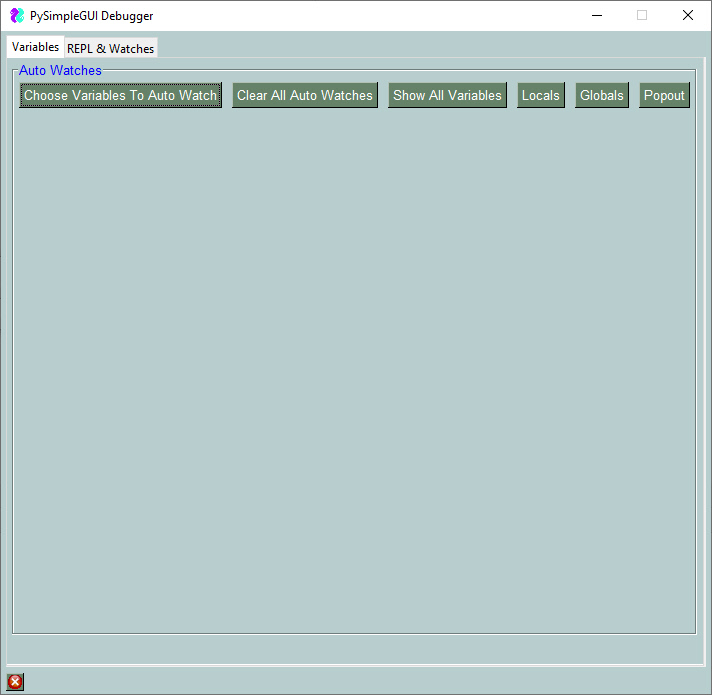
One colour value of the image may be used as a mask colour which will lead to the automatic creation of a wx.Mask object associated to the bitmap object.
Wxpython imageviewer code#
By splitting the responsibilities between Image/wxBitmap like this then it’s easier to use generic code shared by all platforms and image types for generic operations and platform specific code where performance or compatibility is needed. OTOH, wx.Bitmap is intended to be a wrapper of whatever is the native image format that is quickest/easiest to draw to a DC or to be the target of the drawing operations performed on a wx.MemoryDC. It includes generic code for scaling, resizing, clipping, and other manipulations of the image data. It is all generic, platform independent and image file format independent code. More on the difference between wx.Image and wx.Bitmap: wx.Image is just a buffer of RGB bytes with an optional buffer for the alpha bytes. This bitmap can then be drawn in a device context, using wx.DC.DrawBitmap. Instead, a platform-specific wx.Bitmap object must be created from it using the Bitmap.Bitmap(wxImage,int depth) constructor. Functions are available to set and get image bits, so it can be used for basic image manipulation.Ī wx.Image cannot (currently) be drawn directly to a wx.DC. An image can be loaded from a file in a variety of formats, and is extensible to new formats via image format handlers. class encapsulates a platform-independent image.Īn image can be created from data, or using wx.Bitmap.ConvertToImage.

If imgPos + self.height <= boxPos + and deltaY < 0: If imgPos + self.width = boxPos and deltaY > 0: If event.GetWheelRotation() :Ĭompare = imgPos + - boxPos. If self.url and self.GetStatusBar(): #close is seen as a size event. If image.lower().endswith(jpg) or image.lower().endswith(png) or image.lower().endswith(jpeg) or image.lower().endswith(gif) or image.lower().endswith(bmp): Tmp = wx.StaticBitmap(self.imageBox,wx.ID_ANY,bmp,(x,y)) Wximg.SetAlphaData(img.convert(RGBA).tostring()) Wximg.SetData(img.convert(RGB).tostring()) Self.SetStatusText(str(index+1) + / + str(self.numOfPics), 3) Self.SetStatusText(str(ogWidth) + x + str(ogHeight), 1) Img = img.resize((int(self.width),int(self.height)),mode) (wx.EVT_SIZE, lambda evt: self.rescale(evt,1)) (self.imageBox,proportion=1,flag = wx.EXPAND) Self.moveCursor = wx.StockCursor(wx.CURSOR_SIZING) Self.cursor = wx.StockCursor(wx.CURSOR_ARROW) Wx.Frame._init_(self,None,title = viewer)
Wxpython imageviewer windows#
# There are several lines that are Windows specific. # To run this file from command line, comment out line 55 and uncomment # viewer is started by opening an image with it. # There is no functionality to load an image.

# Left and right mouse buttons are next and previous image. # Middle button down while dragging moves image around, as do arrow # Images under 1000x1000 are automatically on high quality.

# m changes PIL mode from low quality (fast) to high quality (slow). I guess the main functions youll want to look at are processPicture and showPicture.Įdit: and just to reiterate, I started this with the example in this tutorial.

Sorry for the non-descriptive variable names and lack of comments. Im new here, and after searching for a while I still cant find a way to upload files. Programming Is Hard, Lets Go Shopping! It speaks to when you should take the time to write your own code and when to just use a third party solution. I didnt actually watch all the videos, so I cant speak to how well it addresss your specific problems.Īlso, heres a blog post by Jeff Atwood on Coding Horror that could apply. User interface – Image viewer – standard gui controls, bottom-up or what?


 0 kommentar(er)
0 kommentar(er)
